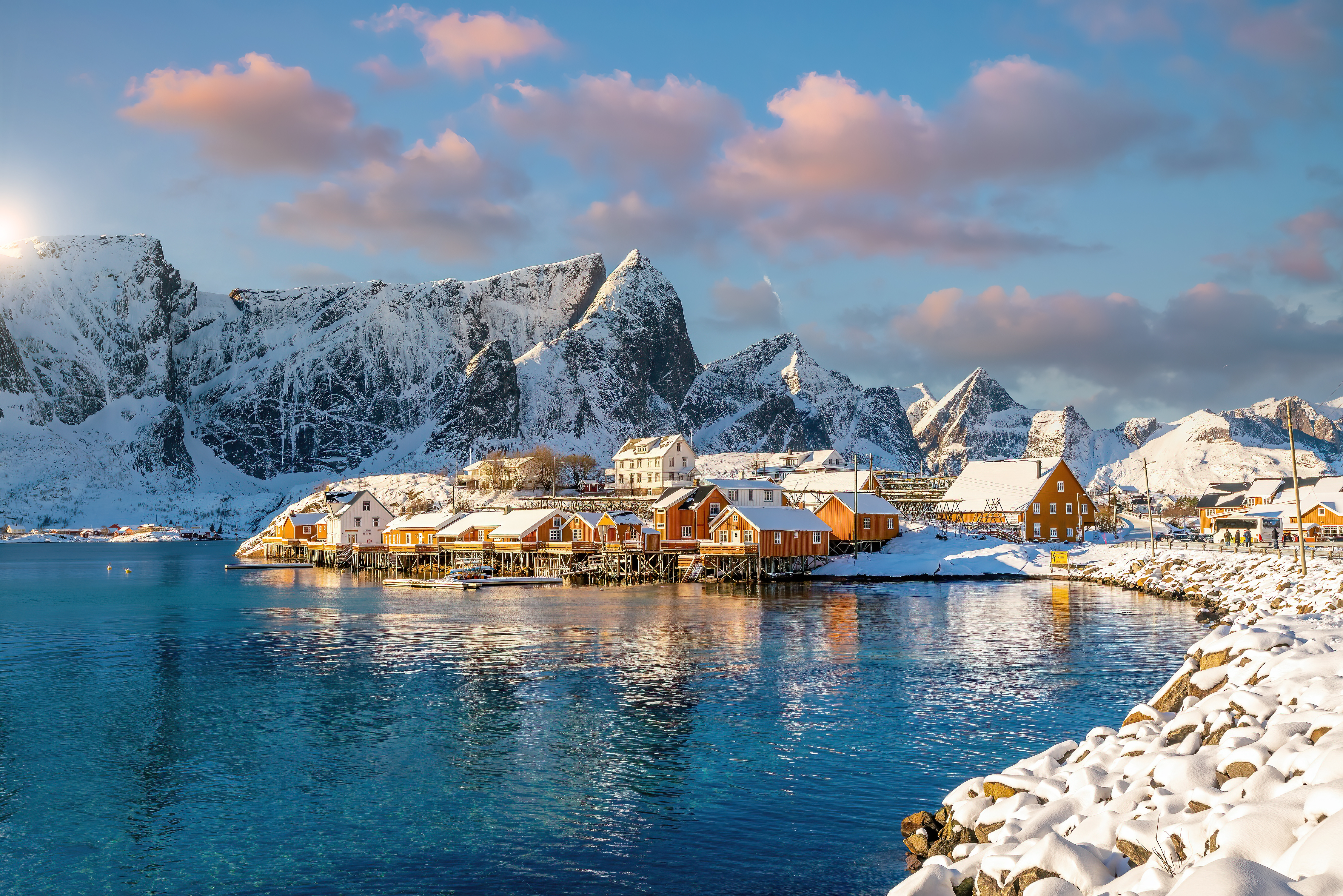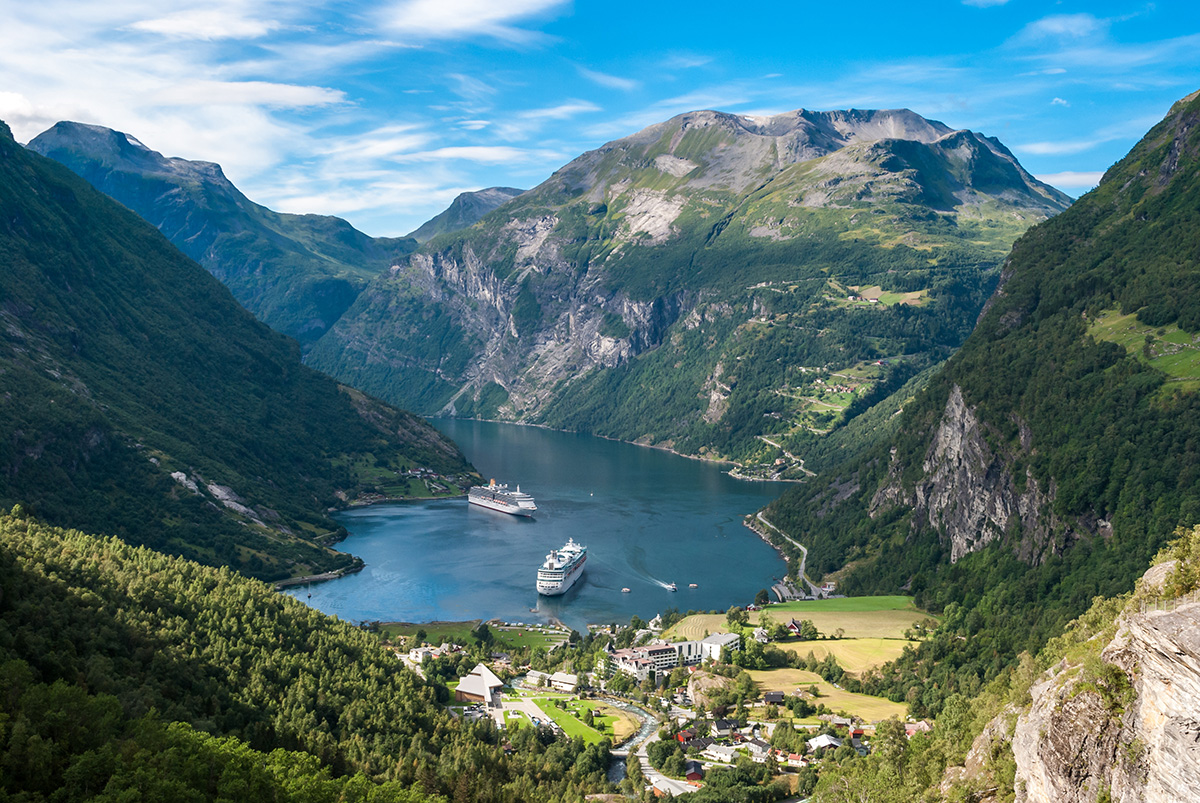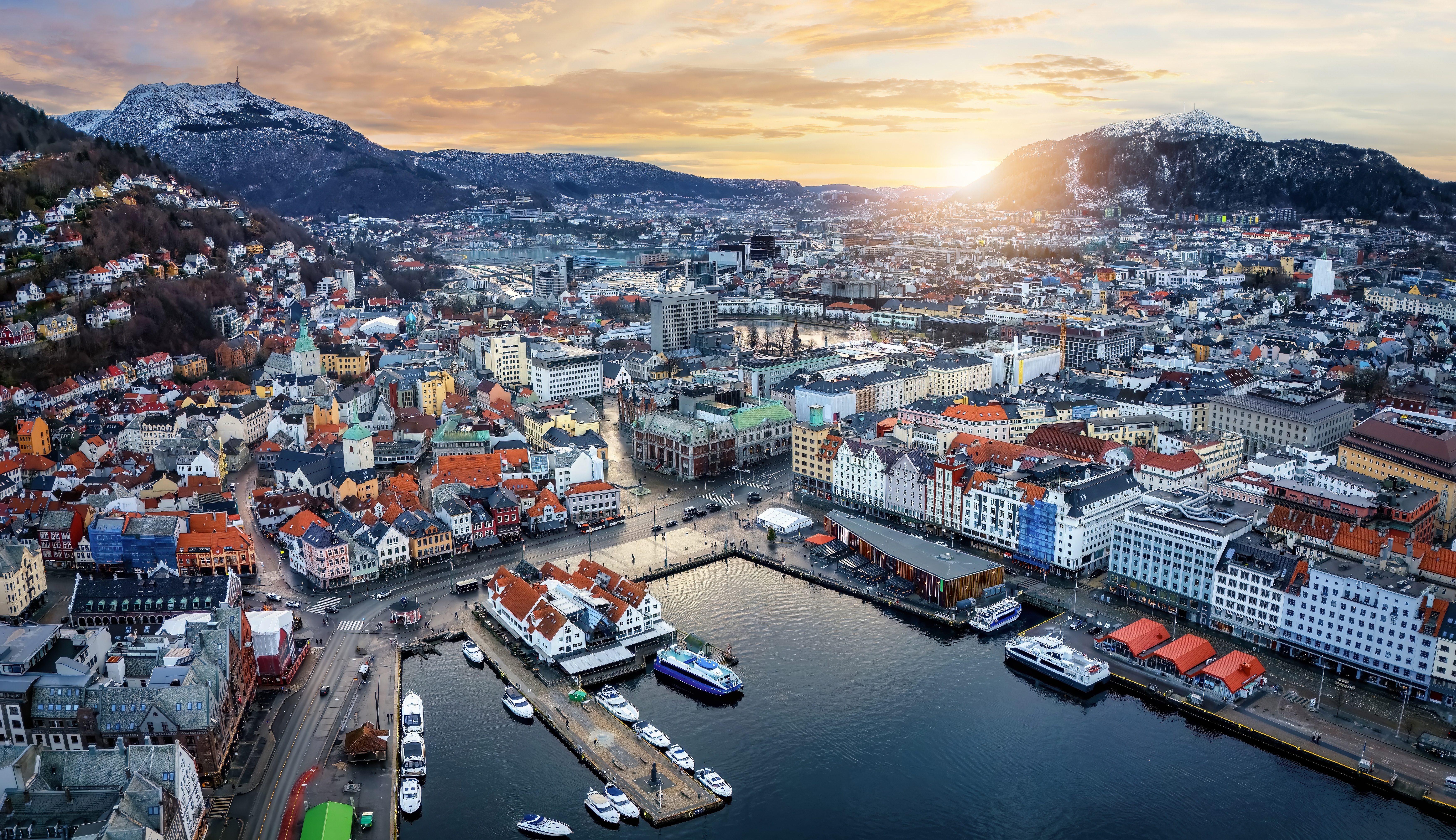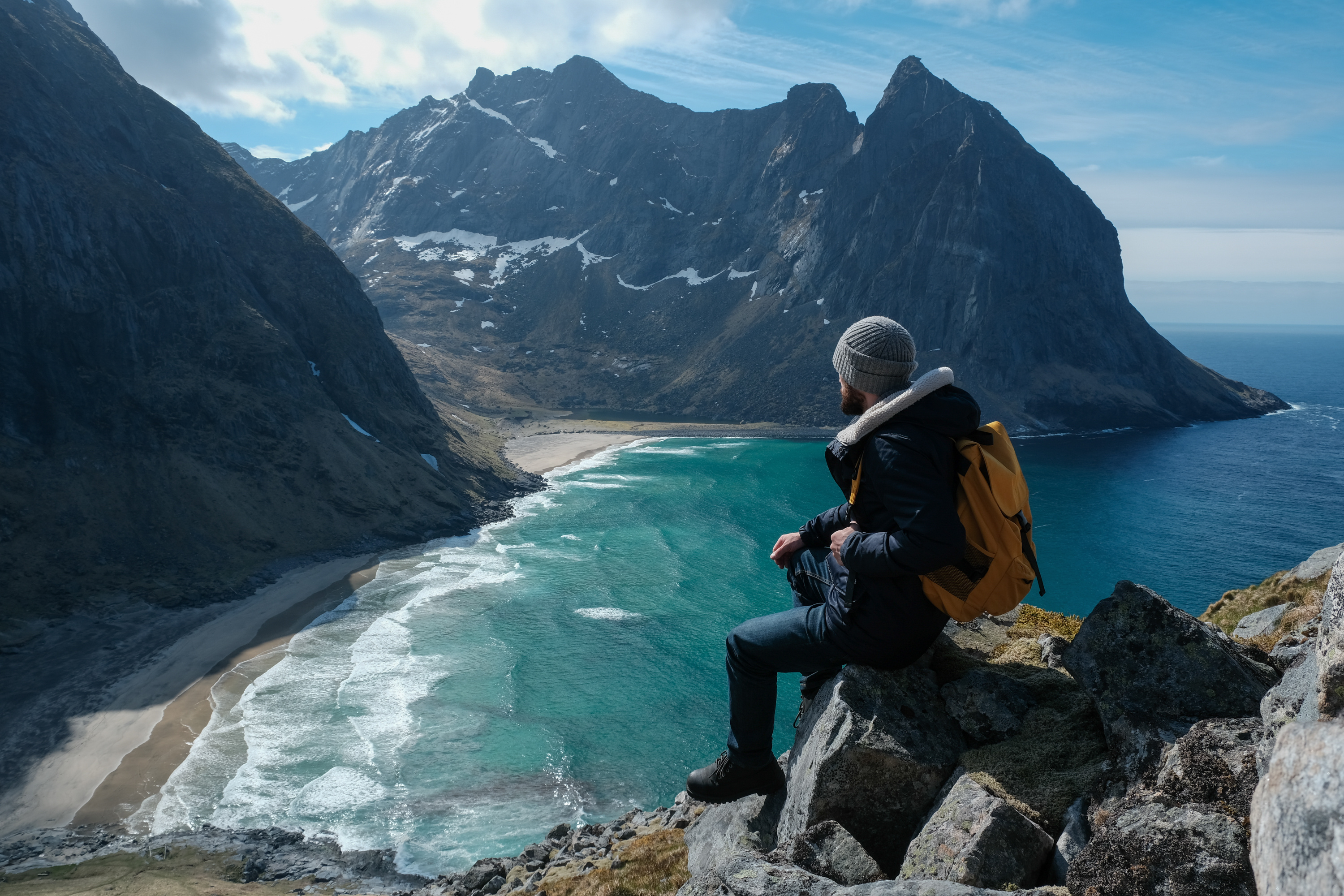Planning a trip to Norway
Planning a trip to Norway sounds easy – right? It’s just Oslo and the fjords, and then it’s on to Sweden.
The fact is that there’s a lot more to Norway than Oslo and the fjords, and a lot more that goes into planning a vacation to Norway besides planning for those two destinations.
So how do you go about tackling this wild, semi-Arctic country?
Decide what kind of trip you want to take
Most people take one of two kinds of trips to Norway:
- A cruise that hits Oslo and the fjords
- A comprehensive Scandinavian vacation that includes Oslo and the fjords
But you’re going to break out from the crowds, aren’t you? You’re going to do something different. You’re going to see the fjords first, and then Oslo.
Point is, those are the popular places, and those are the vacations people take.
So let’s take you through planning what to see and do in Oslo, and how to do the fjords right. Then we’ll tackle the rest of the country.

Oslo: A great European capital
Oslo is the capital of Norway and one of Europe’s great cities, with all the museums, food, and sights of any major capital – meaning that if you love Paris, Madrid, Copenhagen, or Berlin you’ll likely love Oslo as well.
Let’s break down what that might mean for you.
Museums
Oslo has scads of art museums, including:
- A museum devoted to the works of Edvard Munch, painter of “The Scream”
Nearby there’s the strikingly twisted Kistefos Museum, the Haugar Art Museum with its collection of Andy Warhol’s takes on Munch, and the huge private art collection in the Galleri Würth.
In Norway the focus is on contemporary art, so lovers of modern stuff will find lots to explore around Oslo.
Historical sites
Norwegian history is pretty placid as European history goes. As a result, there are few battlefields or monuments to visit in the Oslo area. (And the Viking-ship museum is closed for renovation – drat!)
However, there is quite a good 13th-century castle (Akershus Fortress), some medieval ruins, an historical museum with Viking artifacts, and a museum devoted to the resistance fighters of World War II.
Other buildings of note are:
- The National Theatre
- The Bygdøy Royal Manor, one of the few sites connected with Norway’s royal family that’s open to the public (albeit sporadically)
Food and drink
Now we’re talking.
Traditional Norwegian cuisine is different from the lutefisk and lefse of Norwegian-Americans – but it’s not that far removed.
Staples of Norwegian cooking include:
- Sausage wrapped in a potato-based flatbread
- Open-faced meatloaf or salmon sandwiches
- Waffles with Nutella or brown goat cheese (!)
- Sour-cream porridge with toppings like grated reindeer heart (!!)
- Game of all kinds, notably venison and reindeer
- Seafood – particularly salmon and cod
Seafood restaurants range from humble shop-restaurant combos by the shore to high-end restaurants that combine streamlined Norwegian architecture and décor with gourmet recipes and daring presentations.
Oslo’s markets are great places to grab street food, as well as bread and cheese to hold you over until dinner.
Nightlife
Oslo is renowned for having a vibrant after-dark culture. The problem is in Oslo in the summer it may not get dark until 11 p.m.!
Wine bars are plentiful, and microbreweries have sprung up seemingly everywhere, so you can get a taste of traditional Northern European brews like sours and lagers in addition to your IPAs and stouts.
Outdoors
Summers are short in Norway, so people in Oslo love to get outside whenever they can.
Walking along the waterfront is always popular, as is biking around the city.
For more of a challenge, hike to the top of Vettakollen for amazing views of the city and the surrounding areas.

Fjords: Mountains, valleys, and water
After a couple of days in Oslo you’re ready to head out to the fjords.
There are a lot of fjords – more than 1,000 of them, carved out by glaciers long ago. The result is steep peaks and deep valleys bordering on inlets.
Touring by land
Many people think you can only see the fjords from the water – and make no mistake, that’s a great way to see the fjords.
However, the fact is you can explore fjord country by train, bus or car.
Travel by train
One of the joys of train travel is when it takes you where roads don't go.
For instance, the spectacular fjord town of Vatnahalsen is only accessible via the Flåm Railway, renowned as the steepest railway in the world.
The Bergen Railway and the Rauma line have been proclaimed as some of the world’s most beautiful train trips. Both take you through mountains down to fjords in ways cars can only dream of.
Travel by car
If you prefer car travel, be advised the roads can be challenging. However, the payoff can be great, especially on roads like the Atlantic Road, with its mind-bending twists and turns.
Many tour operators offer self-drive tours of the fjord regions, giving you a look at the amazing scenery from the shore.
Touring by sea
Of course, the top way of seeing the fjords is from the water.
Multiple cruise lines visit the fjords, with some taking more time than others. In general, cruises run seven days to two weeks, with some including bus and/or train travel.
How long you spend cruising the fjords depends on how much you want to explore the region. For some people, one fjord is just like another. For others, each fjord region is like its own little micro-culture.
If there are other things you want to see on a cruise – like the Midnight Sun or the northern lights, for instance – you may want to spend a little less time cruising in and out of fjords.
The point is, you have options.

The rest of Norway: Totally worth exploring
The fjords and Oslo only take up two-thirds of Norway at most. That leaves a whole lot of Norway open for exploration.
Eastern Norway
Eastern Norway gets overlooked, but it’s home to explorable towns like Fredrikstad and Halden in the south and mountains and lush valleys as you head further north.
The east is also the place to try more active pursuits like mountain biking or whitewater rafting down the Sjoa River.
Northern Norway
Only a comparative few intrepid travelers explore the north of Norway, which may either be a turnoff or a “heck, yeah!”, depending on your taste for something different (like grated reindeer heart).
Because of the north’s proximity to the North Pole, summer in northern Norway is filled with sunshine literally ‘round-the-clock.
That takes some getting used to, but it also gives you permission to stay up late and swim in the lakes and inlets or just sit on a rock and watch the sun not go down.
Islands
The north is also filled with islands of all types meant for hiking up and biking around. Senja is probably the most popular island, but the cities of Hanses and Tromsø are good bases for exploration.
The Svalbard Islands sit the top of Norway and offer a truly Arctic experience, with wolves pattering over treeless tundra, but with more creature comforts than you might find in Alaska or Canada.
The town of Longyearbyen is the metropolis of the islands. It may only have 1,700 year-round residents, but that’s enough to make it the world’s northernmost settlement with a population of more than 1,000.
It has 15 restaurants and a brewery, and planes fly there, if you’re interested.

Putting it all together
Norway presents you with a bit of a conundrum, namely:
- Do you do what everyone else does, and visit the fjords and Oslo?
- Do you visit the fjords and Oslo, but differently?
- Do you visit the other parts of Norway instead?
It’s hard to go wrong with any strategy, but for many travelers the middle option may provide the best mix of amazing adventures and unique experiences.
To maximize the potential of this approach you may have to find a good travel advisor, but you should have one of those in your Rolodex (is that still a thing?) anyway.
And then you have to pack.
Packing for Norway
Norway in the summer ranges from kinda temperate to downright hot to arctic, depending on where you are.
(This is being written on June 13, and in Svalbard it’s 39 degrees. Fahrenheit.)
Because of this, you need to pack for just about any sort of weather.
Pack layers, obviously, and rain gear, and long pants, and good hiking boots, and a variety of long-sleeve and short-sleeve T-shirts, and … oh, heck: Just consult our post on cruise packing lists and take along most of what you find for adventure and cold-weather cruises.
You may have to pay for an extra suitcase, but that’s the price of adventure travel.
Travel insurance
One other thing to take with you on your Norwegian vacation: Travel insurance is an essential purchase for big trips. It can protect your travel investment …
- If you have to cancel or interrupt your trip for a covered reason
- If you have a medical emergency
- If you have flight issues
- If you have luggage issues
Getting covered is fast and easy, and starts with getting a quote.
Norway is not only a popular destination – it’s a destination with so much more to offer intrepid travelers.
So the question is: Are you intrepid enough to plan a trip that lets you see all of Norway?
Questions About Travel Insurance?
Check out our online guide, "What Is Travel Insurance All About?" We've provided in-depth answers to all your travel insurance questions, starting with the basics.